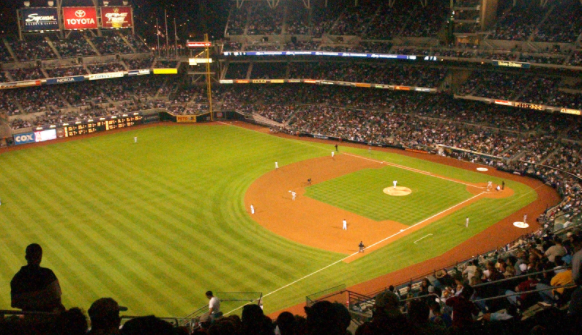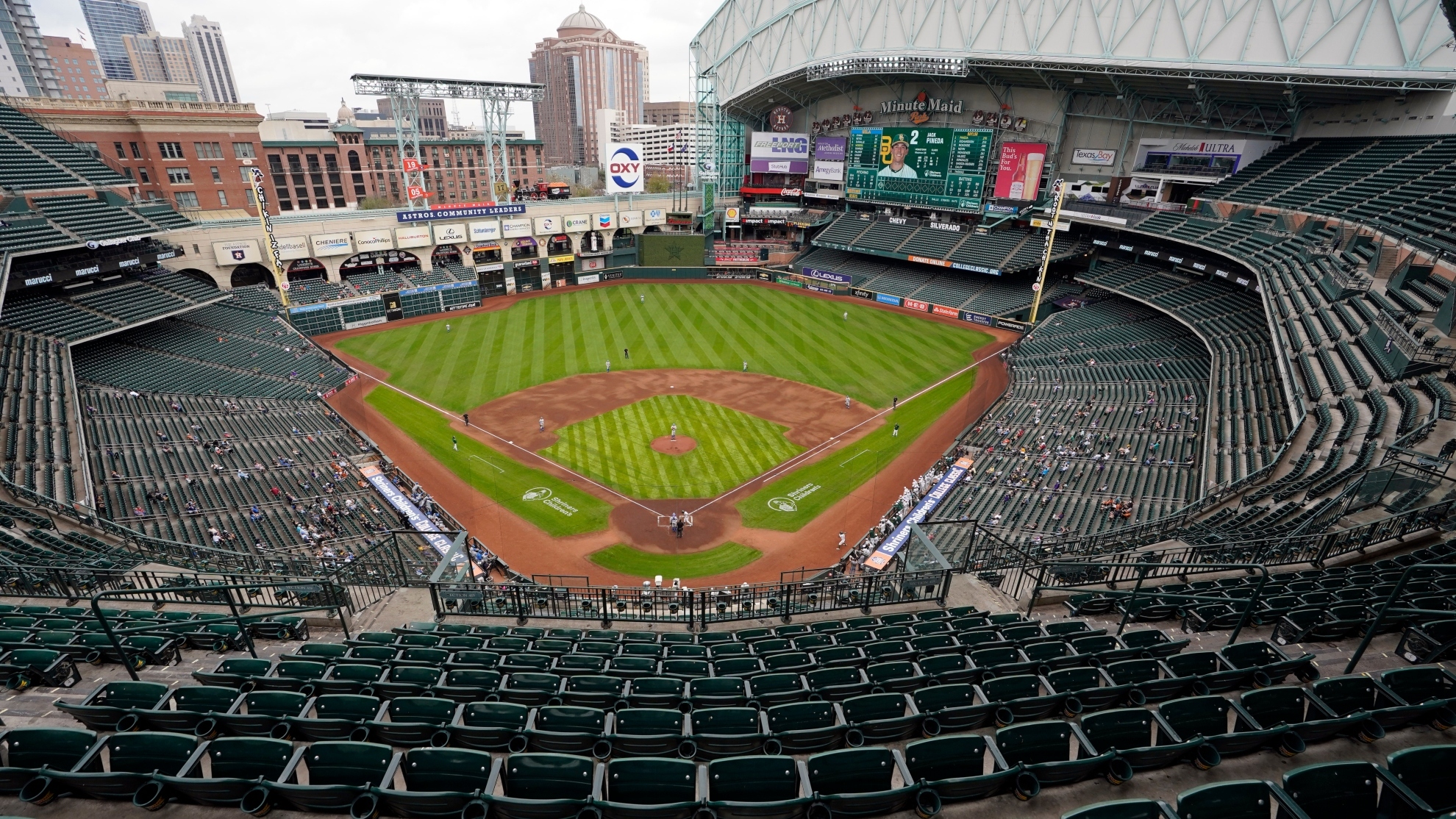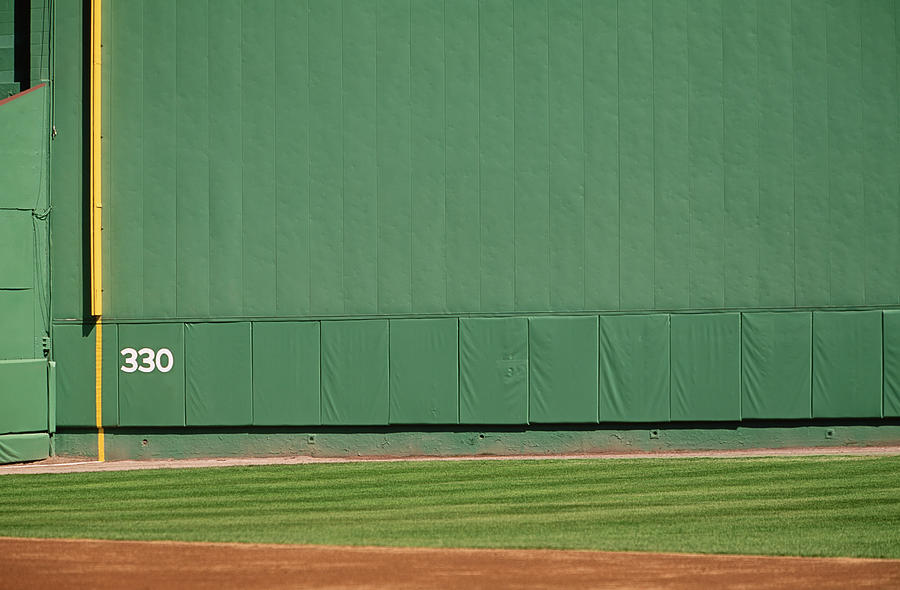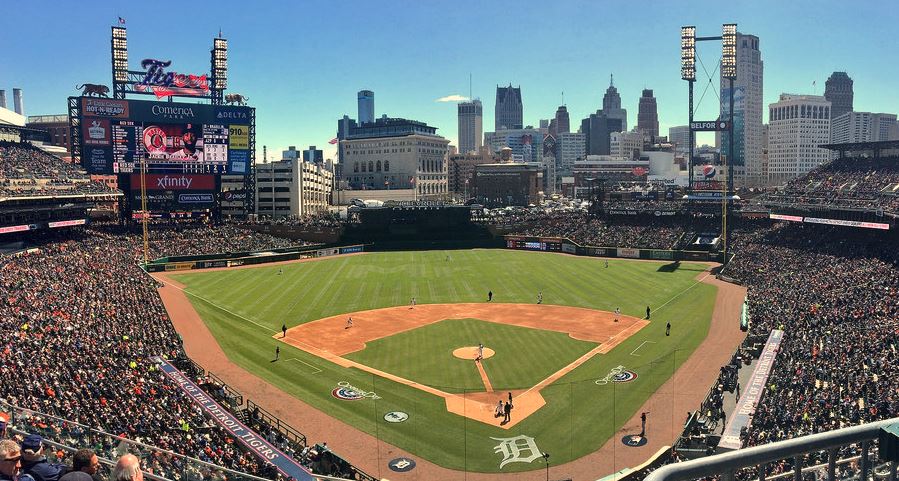You may notice when you go to watch baseball games at different baseball stadiums that the dimensions of the field differ from park to park. While the distances are fairly similar at the little league and high school level, the Major League baseball fields are noticeably different.
Why are Baseball Fields different sizes?
Baseball fields are non-standardized. Therefore most baseball fields are different sizes and dimensions for a unique character, demographic, geographic, historical, and local honor.
Take a look at a baseball field, and then another, and you’ll probably find that they’re each different in their own unique way. Much like baseball not having a time limit, the lack of a consistent field setup is just another reason baseball is different than all of the “ball and goal” sports.
An American football field is 100 yards end zone to end zone, and a basketball court is roughly 92 feet long and 50 feet wide. Soccer pitches can vary but do have parameters for the length and width they must stay in.
Continue reading to learn about reasons some of the most unique baseball stadiums and their geographical, historical, and financial reasons behind them when built.
Contents
- What dictates the size of a baseball field?
- What are the factors of baseball field sizes?
- How tall is an outfield wall?
- How long is a baseball field?
- What is the dirt track in the outfield of a baseball field?
- What MLB stadium has the largest outfield?
- How big is a Little League Baseball Field?
- How big is a High School Baseball Field?
- Why are baseball fields different sizes conclusion
What dictates the size of a baseball field?
The playing field does in fact have some strict rules to follow. The dimensions of the baseball diamond have specific lengths. The length of home later to first base, first base to second base, second base to third base, and third base to home plate is 90 feet. The pitching rubber is 60 feet 6 inches to the home plate.
The dimensions of the actual diamond don’t vary, but the confines of the surrounding areas that mark the field of play can vary tremendously.
Fenway Park in Boston could be the most unique baseball field and field for any sport. This was due to financial and historical reasons. When first built, there was not a wall or fence in the outfield. When baseball became popular, fences and walls were added to baseball fields. For the Boston Red Sox, to have a fence, they needed to get creative because of financial reasons.
The Red Sox would’ve needed to purchase the street and businesses occupying the space in left field or they would need to build a new stadium. Both options were not financially feasible at the time, so the Red Sox created “The Green Monster”, thus creating an iconic and unique baseball field.
A demographic and geographic example of a varied dimension of a baseball field is Coors Field in Colorado for the Rockies. They have some of the furthest fences and walls from home plate in all of the baseballs due to the thin air in Colorado due to its elevation from sea level. Shorter fences would almost certainly result in more home runs and more runs in general.
What are the factors of baseball field sizes?
A typical baseball field fence may be 335 feet to left 375 in between left and center (known as the alley, or gap) 400 feet to center, 375 feet in the other alley, and maybe slightly shorter to right like 330 feet.
There may be a reason the builders of the field could not make the fence a certain length as stated in the example about Fenway Park in Boston. This also goes for the backstops and fences that surround the fields. Some fields at the amateur level run into other fields, running tracks, and so on, and some don’t have fences at all.
Some professional fields may be built for certain player’s strengths. Oracle Park in San Francisco built their right-field wall largely with power hitter Barry Bonds in mind. A mere 309 feet to right field but with a 24-foot-high wall. Even the height of the wall was done with former Giant great Willie Mays in mind, he was number 24. This would be an example of local and historical honor in a stadium’s dimensions.
Top 5 most popular unique baseball stadiums
How tall is an outfield wall?
An outfield wall is typically between 8 to 10 feet, however, there’s nothing that says it can’t be much larger or much shorter.
As mentioned, Fenway Park in Boston, home of the Red Sox is famous for having a giant wall in left field affectionately known as “ The Green Monster”. It is 310 feet from home plate, but rises just over 37 feet tall making it the largest in baseball! Conversely in the right field of Fenway the wall is only 3 to 5 feet high, making it the shortest in baseball!
How long is a baseball field?
A baseball field can vary depending on what obstacles are met while building the field. Simply put, the outfield wall will generally be between 300 and 400 feet, and vary accordingly due to demographic, regional, historical, local, and/or financial reasons.
What is the dirt track in the outfield of a baseball field?
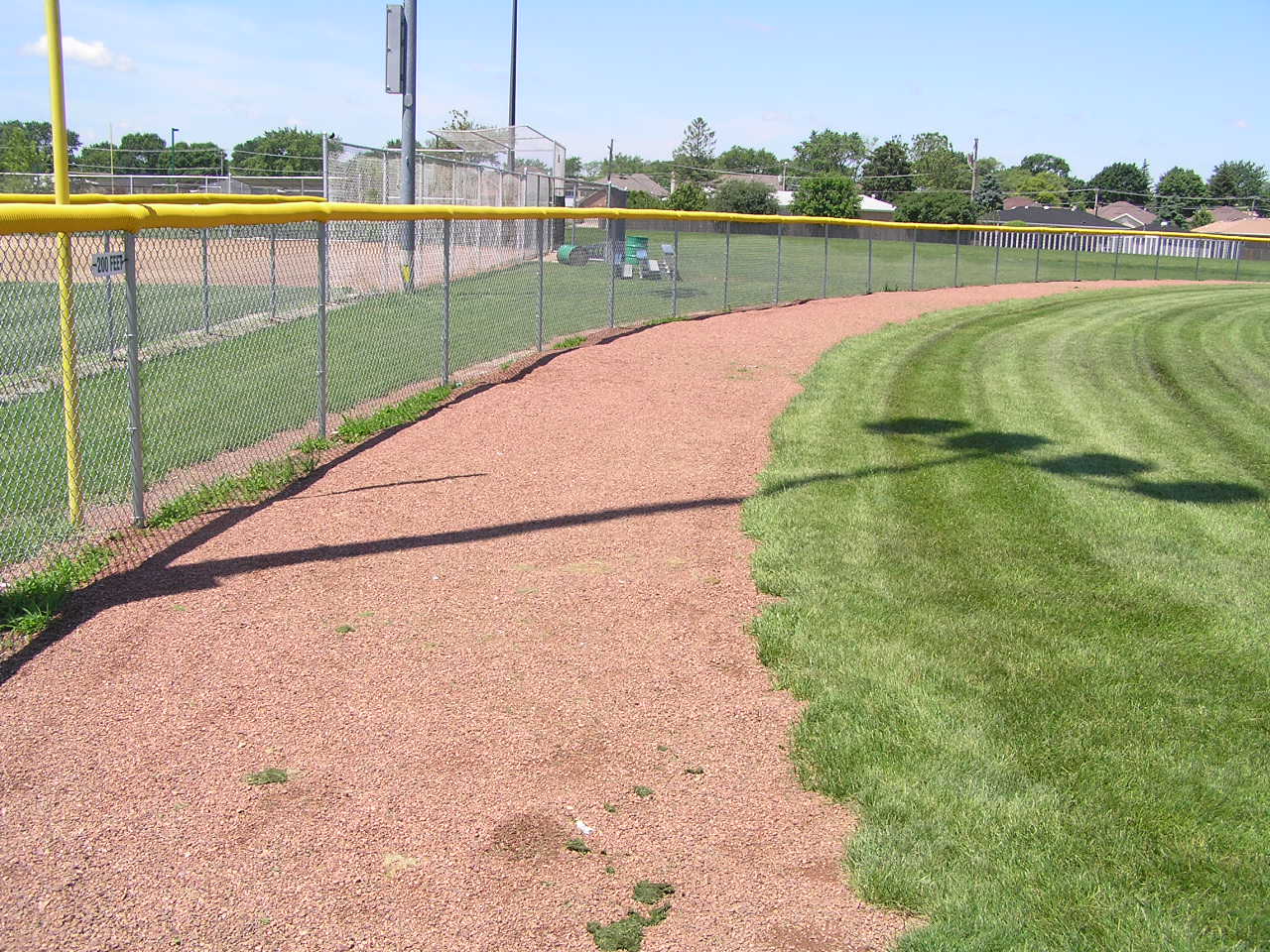
The dirt track in the outfield of a baseball field is called a “Warning Track”. If you’re not familiar with the game, you may notice what looks like a running track in front of the outfield wall. The warning track is there to warn the outfielder to know that he/she is approaching the wall.
If a ball is hit into the outfield, behind the outfielder, they will take off sprinting, trying to catch the ball. There is a good chance they may run into the wall since they are watching the ball and not where they are going is going.
The change to dirt under their feet is there to warn them they only have a few more steps to go before reaching the wall. It’s also why many outfield walls, especially those made of concrete or brick, have padding on them.
What MLB stadium has the largest outfield?
The MLB stadium with the largest outfield currently is at Comerica Park in Detroit which boasts a deep centerfielder wall of 420 feet. In addition, it is 345 feet to left field and 330 feet to right field, making this a big outfield.
How big is a Little League Baseball Field?
Little League Baseball Fields are much smaller than Major League, Adult, or High School size fields. The pitching rubber is 46 inches from home plate and the bases are 60 feet apart as opposed to 90. The outfield wall of a Little League field is usually 200 to 210 feet.
How big is a High School Baseball Field?
A High School Baseball Field is the same size as a Major League Baseball Field with options for various distances for the outfield fences length from home plate and height of the outfield walls.
After playing Little League a player would move up to playing in a regulation adult-sized baseball field with 90-foot base paths, and a pitching rubber 60 feet 6 inches from home plate.
High school fields are the same dimension as college or professional fields with 90-foot base paths and the 60 feet 6-inch pitching rubber distance.
The difference you may see at these amateur fields are slightly shorter fences at times, but they will still usually be 400 feet to the center and between 300 and 380 around other areas of the park. Some may even be bigger than Major League fields. Again, it all depends on the surroundings of the field, and what made the most sense when it was built.
Why are baseball fields different sizes conclusion
Baseball fields are non-standardized; therefore, most baseball fields are different sizes and dimensions for a unique character, demographics, geographic, and historical, and local honor.
Baseball fields are different sizes for different reasons. While there are a few crazy outliers like Fenway, most stay in a similar length and height parameter.
Having baseball fields varied makes each one special in their own unique way. From the small hill in center field in Houston to the “basket” and ivy-covered walls at Wrigley in Chicago, and the large foul grounds at the Coliseum in Oakland, each park had its own strengths and weaknesses. But are all uniquely beautiful in their own way.

